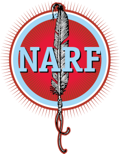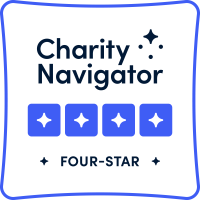
Anne Lucke, one of NARF’s librarians at the National Indian Law Library, recently was interviewed by Booklist Online, a web service from the American Library Association. The interview covers some of the intricacies of researching Indian law, and especially tribal law.
An excerpt from the interview is below, and you can read the full interview on the Booklist Online website.
Susan: For some of us (ahem, me), our knowledge of tribal law comes from reading Louise Erdrich or watching the movie Wind River. Can you give us (ahem, me) a primer on tribal law?
Anne: Each of the federally recognized Indian tribes and Alaska Native villages is its own sovereign nation and therefore has its own body of law, which applies within its territories and to its members. National Indian Law Library (NILL) works to provide access to these tribal codes, constitutions, intergovernmental agreements, and legal opinions. Some tribes have complex laws published through mainstream legal publishers; other tribes have laws that are passed down by oral tradition and are never written down. Most come out somewhere in the middle. It’s not a perfect comparison, but if you think of all the laws your city and state have, a tribe will have similar laws governing housing, zoning, wildlife, motor vehicles, etc.
Wind River and The Round House (2012) are both pretty accessible representations of the way tribal law and federal and state law interact, but it’s still complicated.
Susan: What is the NARF library like? Who do you serve, aside from the lawyers who work for NARF?
Anne: NILL was founded in 1972 as part of NARF’s efforts to educate the public about Indian law. Since then, we’ve been collecting items relevant to federal Indian law and tribal law, much of which is not available anywhere else. Our tribal law collection is particularly distinct. There are more than 500 federally recognized tribes in the U.S., and they all have legal systems and laws specific to their land and people. For a variety of reasons, tribal laws can be difficult to access, so we have created the Tribal Law Gateway to direct people to tribal law, whether it be on a tribe’s website, on our website, or in print in our collection: www.narf.org/nill/triballaw/.
We have two full-time librarians to serve a very diverse patron base. Like all law-firm librarians, we support the work of the attorneys and staff at NARF by providing research for their cases. In addition, NILL is open to the public and anyone with an Indian law or tribal law question can contact us for assistance. Indian law intersects with so many areas—child welfare law, environmental law, civil rights law, employment law—so we get questions from all kinds of people. Our patrons include tribal leaders, attorneys, students, social workers, government employees, the general public, and, of course, other librarians. I especially enjoy using our tribal law collection to help tribal leaders locate sample laws they can use to build from when they are drafting laws for their tribe. It’s wonderful when someone asks, “Can you help me find sample cultural resource preservation codes?” and I can say, “Yes!”
Read the full article on the Booklist Online website.
More blog posts

